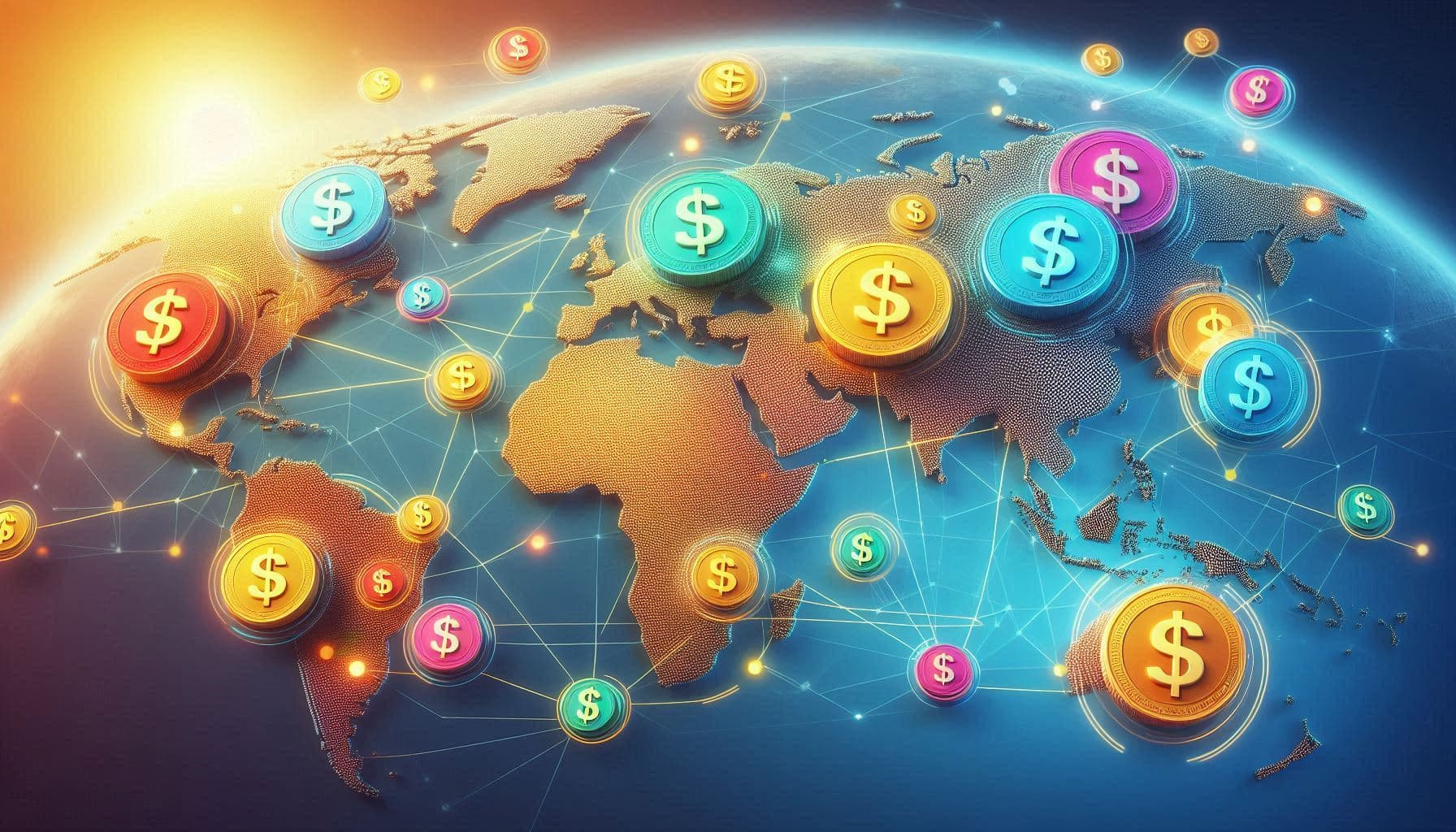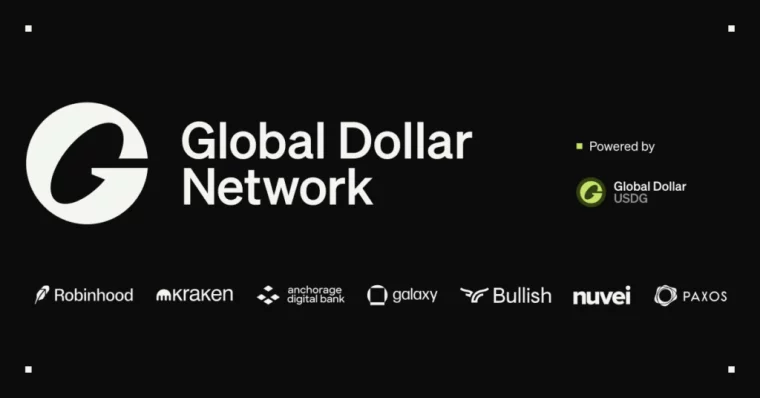A group of crypto companies has joined forces to launch a new safe, trusted, and equitable blockchain network and stablecoin that apparently seeks to compete with the large number of similar tokens that have been flooding the market lately.
The Global Dollar Network, as this new blockchain project is called, is the result of a collaboration between seven different crypto exchanges and companies from the Web 3 space.
The list of sponsors for the project includes Galaxy Digital, Paxos, Kraken, Nuvei, Anchorage Digital, Bullish, and Robinhood.
They have pooled together their expertise, large user bases, and vision to create a new ecosystem and a digital asset that should make it easier for individuals and companies to invest in the crypto market and send money overseas.
The stablecoin that powers the blockchain is called the Global Dollar (USDG) and it will be issued by Paxos in Singapore. This digital asset is designed to comply with the most stringent regulatory standards to incentivize global adoption.
USDG Aims to Address the Shortcomings of Existing Stablecoins
The launch of this stablecoin comes at a point when these digital assets have become well-established bridges between traditional finance and the Web3 space. They enable faster, cheaper, and more efficient transactions. However, the market is dominated by two players – Tether’s USDT and Circle’s USDC tokens.
Data from DefiLlama indicated that USDT is the dominant player in this space, boasting a market share of nearly 70% in the beginning of 2024, followed by USDC with a 19% share.
However, these two incumbents have been criticized for failing to disclose its reserves adequately. Regulators are still struggling to make sure that they enforce appropriate consumer protections and are transparent enough to ensure that any disruptions in their operations do not cause a cataclysmic financial event.
Meanwhile, industry observers claim that both Circle and Tether maintain outdated business models that generate high costs for the blockchain ecosystem and its users.
“The lack of competition in the regulated stablecoin market has prevented the industry from reaching its full potential,” said Arjun Sethi, Co-CEO at Kraken, one of the exchanges that backed the Global Dollar Network initiative. “USDG upends this dynamic with a more equitable model that will bring mainstream participants into the ecosystem and accelerate new stablecoin use cases.”
To achieve this purpose, the network has been built to provide economic benefits to all participants – not just the stablecoin’s issuer. The ultimate goal is to reshape this landscape and accelerate society’s adoption of these kinds of assets as they could entirely transform the banking and payments industry.
“Stablecoins are replatforming the financial system and revolutionizing how people interact with US dollars and payments,” said Charles Cascarilla, CEO and Co-Founder of Paxos.
“However, the leading stablecoins are unregulated and retain all the reserve economics. Global Dollar Network will return virtually all rewards to participants and is open for anyone to join. It is designed to incentivize global stablecoin usage and accelerate societal wide adoption of this technology.”
The Global Dollar Network Explained
The USDG stablecoin is the centerpiece of the Global Dollar Network. This is a fully-backed, dollar-pegged, digital asset whose market value at any given point is fully covered by liquid reserves including US dollar deposits, short-term US-government-issued securities, and other cash equivalents.
The project’s backend infrastructure was designed so users can redeem their USDG tokens at any point for US dollars.
In addition, the companies that are backing this initiative are relying on each other’s strengths to incentivize the development and adoption of the Global Dollar Network. Their influence and reach in multiple markets across the world may rapidly build an ecosystem of developers, users, market-makers, trading firms, and investors that can accelerate both individual and institutional support.
“Institutions gain an incredible set of opportunities with stablecoins: fast peer-to-peer and cross-border settlement, efficient trading capability and the chance to earn rewards on select stablecoin deposits,” said Nathan McCauley, CEO of Anchorage Digital.
“We’re pleased to support the launch of Global Dollar Network that can bring these benefits to reality.”
Holders Will Receive a Portion of the Interest Earned by USDG’s Reserves
[1 / 4] Today, we’re launching Global Dollar Network (@global_dollar ) — an open network to accelerate and reward global stablecoin adoption. Additional partners include @Anchorage, @Bullish, @galaxyhq, @krakenfx, @Nuvei and @RobinhoodApp.
View the press release ⬇️…
— Paxos (@Paxos) November 4, 2024
A key differentiator of the Global Dollar Network is its innovative yield-sharing model. Unlike existing stablecoin providers that retain all the interest earned on their reserve assets, the Global Dollar Network will return the vast majority of these rewards to its participants.
“The way we have set this up is that the participants are being rewarded for activity that helps grow the utility of the network,” explained Cascarilla.
“That could be for a number of activities; different participants can be rewarded in different ways, because not everyone does the same thing, and that’s actually what makes a thriving ecosystem,” he added.
The distribution of rewards aims to incentivize a wide range of stakeholders, from custodians and exchanges to fintech firms and payment providers, all of who will actively contribute to the growth and adoption of the USDG stablecoin.
“Stablecoins have been proven to offer a bridge between traditional finance and cryptocurrencies, enabling faster, lower cost and more efficient transactions,” said Johann Kerbrat, GM & VP of Robinhood Crypto.
“We’re pleased to support the Global Dollar Network’s efforts to expand these opportunities, which align with our commitment to making financial access easier and more inclusive.”
The Singaporean DBS Bank Was Selected to Manage Reserves
Starting today, USDG will be available to customers of Anchorage Digital, Galaxy Digital, Kraken, and Paxos. The project is also actively inviting other companies to join to strengthen the ecosystem. This would include investment platforms, banks, merchants, exchanges, and custodians, among others.
“Trusted stablecoins are essential in bridging the gap between crypto and traditional markets,” said Tom Farley, CEO of Bullish.
Also read: Crypto Traders Should Prepare for the US Election
To support the global adoption of the USDG stablecoin, the Global Dollar Network has secured DBS Bank, Southeast Asia’s largest bank by assets and recognized as the Safest Bank in Asia for the 16 consecutive years by Global Finance, as the primary banking partner at launch. DBS Bank will handle the cash management and custody of the USDG reserves.
The DBS Bank was the institution selected to serve as the primary banking partner for the project. They have operations in Southeast Asia mostly and were named the Safest Bank in the continent for the 16th consecutive year recently. DBS will handle both reserves and cash payments for the Global Dollar Network.
The Combined Effort of These Seven Companies May Turn the Tables in the Stablecoin Market
The stablecoin industry is evolving rapidly and moving from being a highly consolidated space to a more fragmented market. The introduction of new products like USDG that offer more benefits to adopters and users is positive for the crypto industry as competition may prompt incumbents to innovate and improve their current business models.
“Anybody can join the Global Dollar Network and accrue rewards for activity. We’re distributing something like 97% of the economics. That’s a big difference from how other stablecoins have been set up and created to date.”
The Global Dollar Network aims to fill the regulatory gaps that its competitors have left along the way. The alliance forged by these seven big companies in the fintech and Web3 space may prove to be one of the strengths of the Global Dollar Network and could quickly position it as a leading player in this growing segment of the crypto space.

